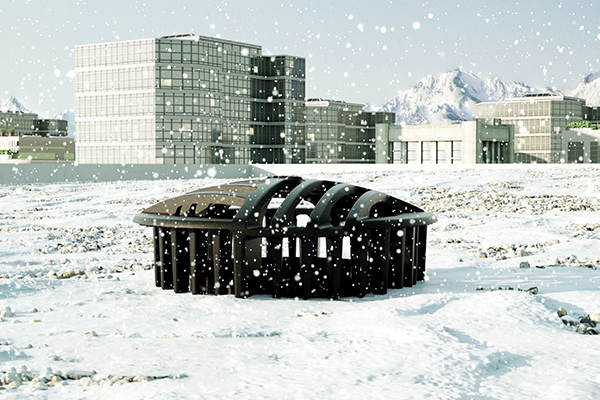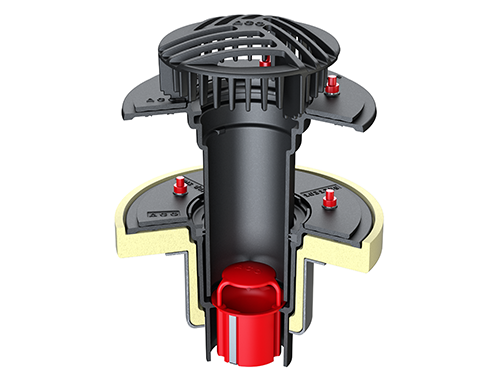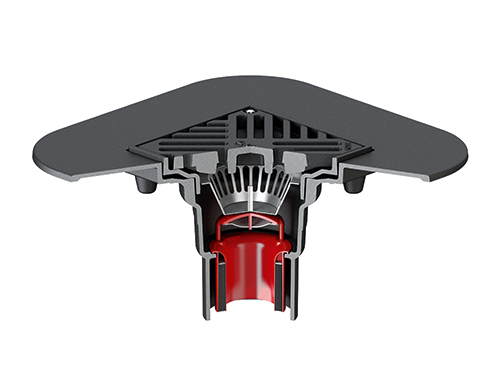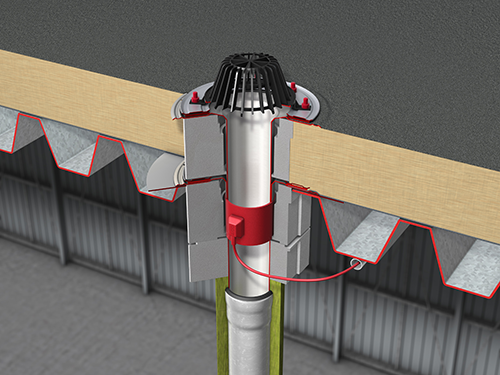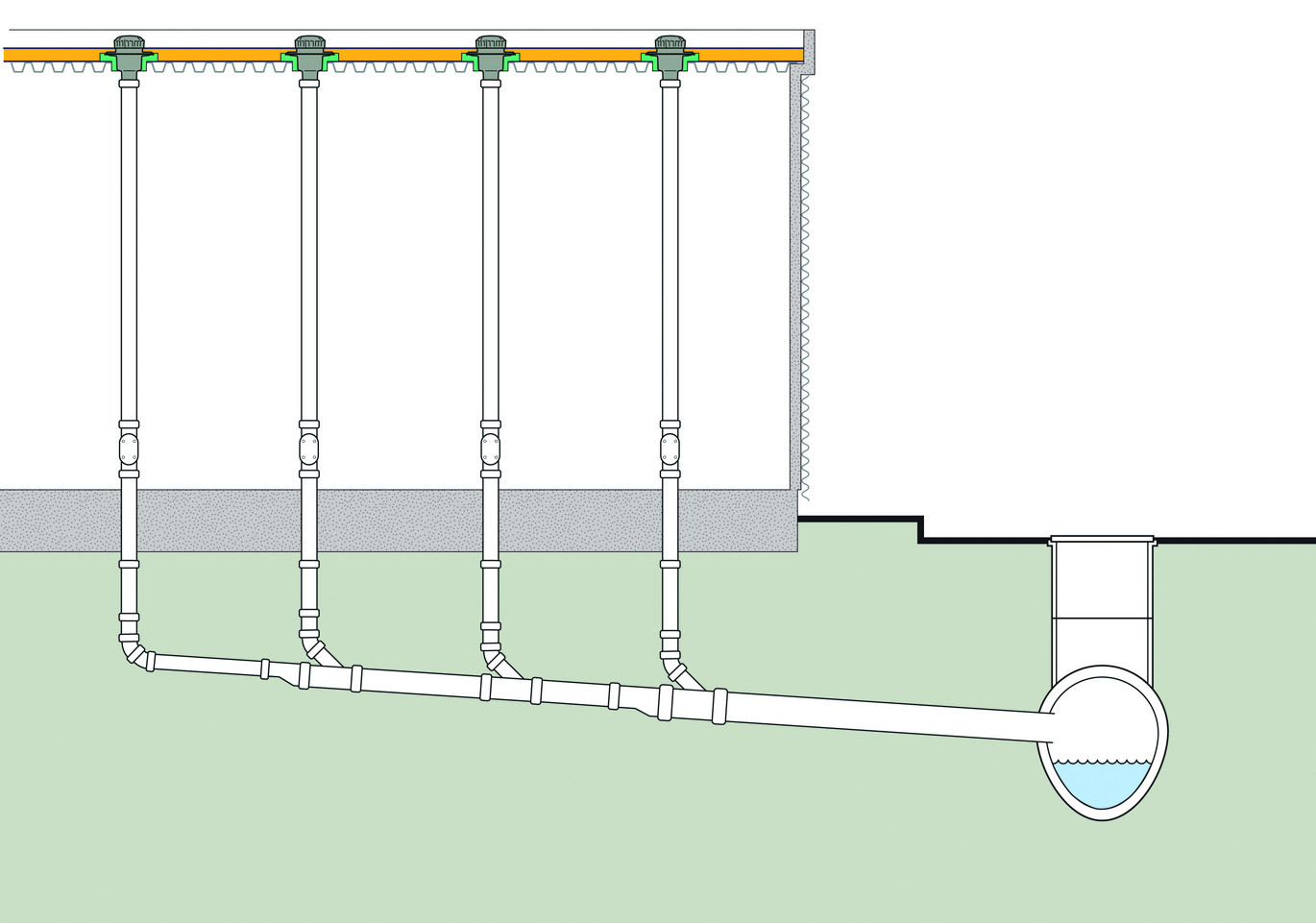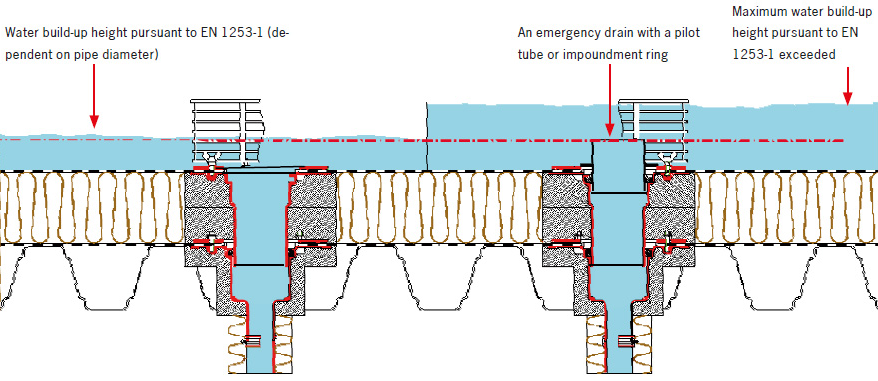Flat roof gullies for gravity drainage are used to drain small flat roofs with a surface area of less than 150 m² per gully. However, this type of drainage can also be applied to larger roofs. Whether the roof covering is membrane, concrete, or gravel, ACO’s solution can be flexibly adapted to meet different requirements. The individual components of the gullies — such as gratings, top sections, and gully bodies — can be combined as needed using our modular system.
With the right accessories, ACO roof gullies can also be used for green roof drainage. As urban areas become increasingly dense, more and more ecological surfaces are being sealed. An intensive or extensive green flat roof is a relatively simple way to compensate for this.


Gravity roof drainage portfolio

Cast iron (EN-GJL‑200)
Consists of an iron-carbon alloy where the carbon is embedded in strips within the metallic base. This so-called graphite mesh gives cast iron its exceptional resistance to corrosion and as a result, makes it ideally suited to use in wastewater technology.
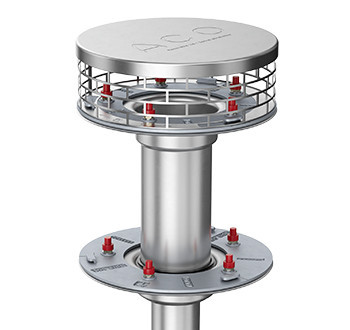
Stainless steel (grade 304)
Is a term used to describe an alloyed or unalloyed steel with a particular level of purity. Steel is resistant to water, steam and air humidity and is used for many different purposes. Typical areas of application include roof drainage for large production buildings.
Parking deck
In the case of parking deck drainage a differentiation is made between external and internal parking decks (multi-storey car parks, underground car parks, ramps, entrance and exit areas). ACO parking deck gullies and parking deck drainage channels made of cast iron or stainless steel deal with substantial quantities of rainfall reliably and copy easily with the loads they are subjected to by vehicles, rainwater and, in the winter, snow accumulations on cars and in their wheel housings. The parking deck drainage system and also the waterproofing between it and the subsoil or substrate must fulfil various criteria:
- Resistance to high structural and mechanical loads and chemical exposure
- Secure, reliable and durable waterproofing and seals
- Alkali resistance
The roof forms the upper boundary of a building. The roof seals are very important because of the severe stress the roof is exposed to from precipitation, strongly fluctuating climatic influences and a wide range of traffic loads and related stresses. Roof structures can therefore be divided up into two groups depending on the seal:
- Flat roof structures with one seal
- Flat roof structures with two seals
ACO Spin flat roof drains can be used in all types of roofs thanks to their modular system design. In roofs with two seals, the drain body is integrated with the vapour seal, while the riser is incorporated in the roof sealing membrane. The drains are fitted with compression sealing flanges which allow them to be integrated within all standard sealing membranes. The drain bodies are installed in special insulating bodies to prevent the formation of condensation water around the drain body – this is particularly important for thermally-insulated flat roofs, green roofs and parking decks.
- Planning must comply with EN 12056-3, as well as the flat roof regulations and, where applicable, the green roof regulations.


Emergency drainage
Flat roof drainage systems must be laid out in accordance with the reference rainfall figures. The reference rainfall can be exceeded during periods of heavy rainfall. This can cause water to pool on the surface of a flat roof. An independent emergency drainage system for flat roof drains is therefore required in accordance with EN 12056-3.

Cast iron (EN-GJL‑200)
Consists of an iron-carbon alloy where the carbon is embedded in strips within the metallic base. This so-called graphite mesh gives cast iron its exceptional resistance to corrosion and as a result, makes it ideally suited to use in wastewater technology.

Stainless steel (grade 304)
Is a term used to describe an alloyed or unalloyed steel with a particular level of purity. Steel is resistant to water, steam and air humidity and is used for many different purposes. Typical areas of application include roof drainage for large production buildings.
Parking deck
In the case of parking deck drainage a differentiation is made between external and internal parking decks (multi-storey car parks, underground car parks, ramps, entrance and exit areas). ACO parking deck gullies and parking deck drainage channels made of cast iron or stainless steel deal with substantial quantities of rainfall reliably and copy easily with the loads they are subjected to by vehicles, rainwater and, in the winter, snow accumulations on cars and in their wheel housings. The parking deck drainage system and also the waterproofing between it and the subsoil or substrate must fulfil various criteria:
- Resistance to high structural and mechanical loads and chemical exposure
- Secure, reliable and durable waterproofing and seals
- Alkali resistance
The roof forms the upper boundary of a building. The roof seals are very important because of the severe stress the roof is exposed to from precipitation, strongly fluctuating climatic influences and a wide range of traffic loads and related stresses. Roof structures can therefore be divided up into two groups depending on the seal:
- Flat roof structures with one seal
- Flat roof structures with two seals
ACO Spin flat roof drains can be used in all types of roofs thanks to their modular system design. In roofs with two seals, the drain body is integrated with the vapour seal, while the riser is incorporated in the roof sealing membrane. The drains are fitted with compression sealing flanges which allow them to be integrated within all standard sealing membranes. The drain bodies are installed in special insulating bodies to prevent the formation of condensation water around the drain body – this is particularly important for thermally-insulated flat roofs, green roofs and parking decks.
- Planning must comply with EN 12056-3, as well as the flat roof regulations and, where applicable, the green roof regulations.


Emergency drainage
Flat roof drainage systems must be laid out in accordance with the reference rainfall figures. The reference rainfall can be exceeded during periods of heavy rainfall. This can cause water to pool on the surface of a flat roof. An independent emergency drainage system for flat roof drains is therefore required in accordance with EN 12056-3.

